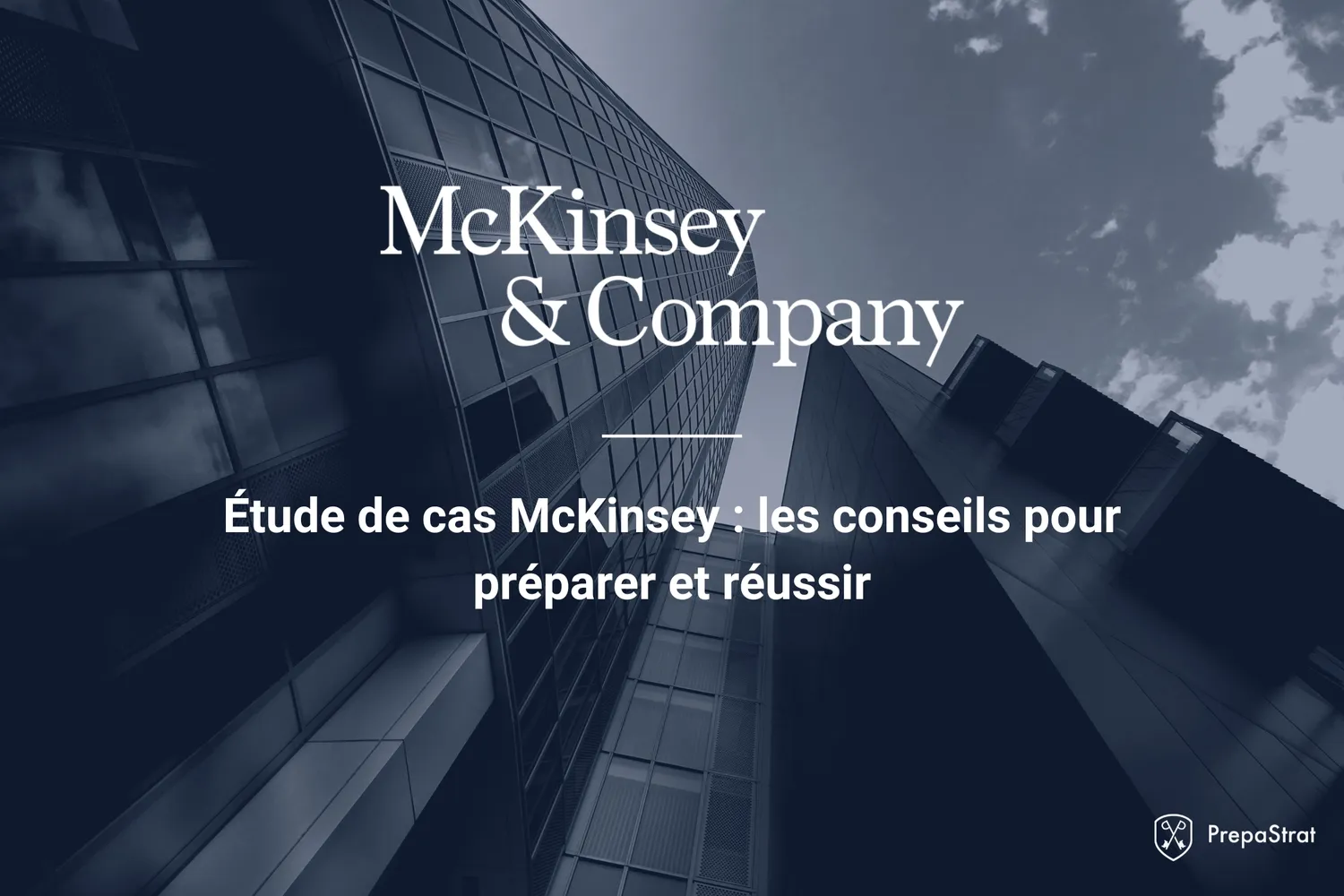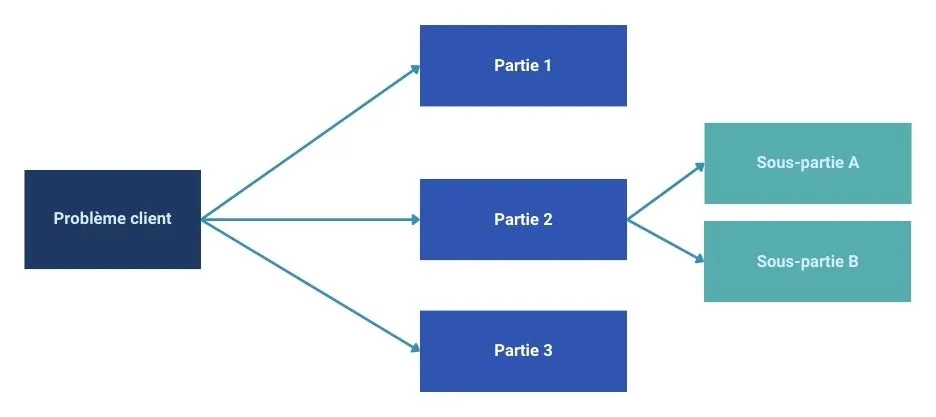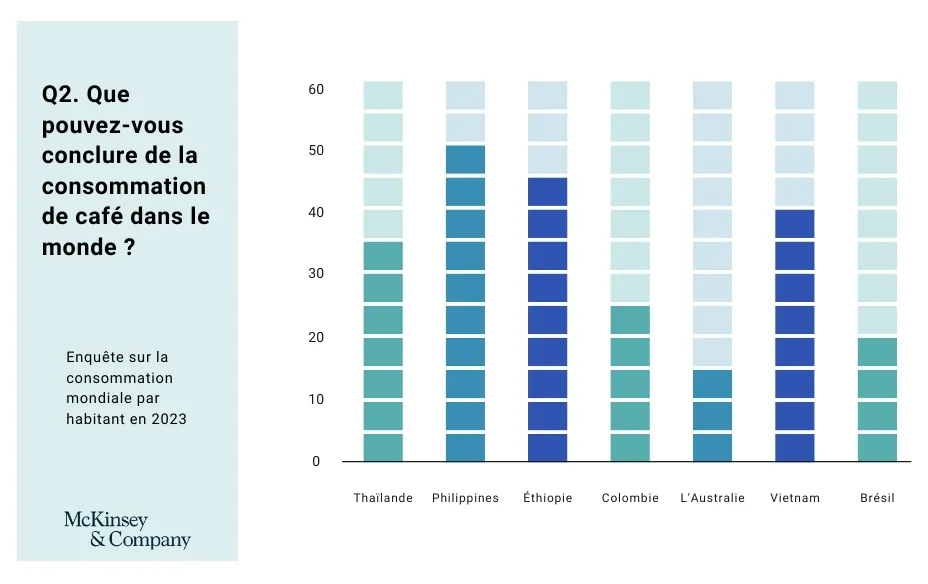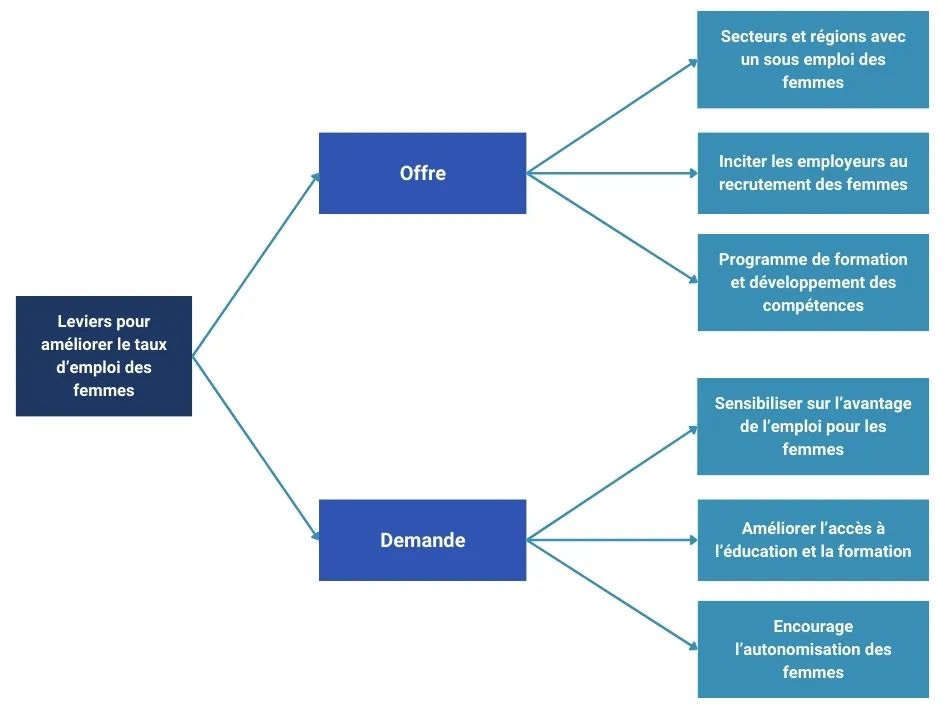
McKinsey case study: preparing for success
Every year, McKinsey receives thousands of applications - 12,000 to be precise in 2022 - and only 1% of them actually join the firm. The future McKinsey consultants all have one thing in common: they have passed their case studies. The McKinsey case study is unique in that it is interviewer-led, in other words, the interviewer guides the resolution of the case study with his or her questions. It's the only firm that interviews in this way, the others preferring by contrast interviewee-led case studies, where it's the candidate who leads the resolution of the case. Although the format of the McKinsey case study is different, the expectations remain the same, and the demands are even higher: for each new question, you have an opportunity to shine.
In this article, you'll find everything you need to know to master, prepare and succeed in McKinsey case studies.
See also: Are MBBs the undisputed leaders in strategy consulting ad vitam aeternam?
McKinsey case study description
As part of McKinsey's recruiting process, each interview involves a 30-45 minute case study. As you may have guessed, the interviewer leads the resolution of the case by asking questions. In practical terms, McKinsey case studies resemble a long exercise with several questions to solve, rather like a written exam. The objective is always the same: to test your ability to structure a problem by identifying the most important elements to be analyzed, leading to a relevant recommendation to solve the customer's problem.
At the beginning of the statement, a long section is devoted to setting the context of the case study. While it's important to have the main contextual elements in mind, don't get lost trying to write everything down. The most important part comes later. Once you've set the scene, the interviewer gets to the heart of the matter, announcing the problem encountered. Once you've reached this point, you've got the main elements for understanding the case study. You can ask questions if certain elements are unclear, in short, you can clarify the problem. Otherwise, the interviewer will start with the first question. McKinsey case studies generally all have the same format and come from the firm's case bank, which is regularly updated, except for certain Partners who have their own cases.
McKinsey's expectations are not very different from those of other firms, even if the case study format is. Interviewers will be looking primarily at three elements:
- Problem-solving skills: Support customers in identifying and solving problems, demonstrating intellectual ability and rigor, as well as the practical sense to determine what may and may not work.
- Analytical skills: Adopt an explanatory approach to your analytical reasoning before starting to solve calculations, be able to make estimates based on business hypotheses, and know how to stand back from your results by performing sanity checks.
- Use common sense: Be able to take a step back from the problem and the case resolution, taking into account all the stakeholders, thanks to the knowledge you have from your past experiences.
McKinsey case studies consist of 3 to 5 questions to test your ability to structure a problem, read a document, make calculations and come up with creative ideas. Let's get into the details of these questions.
See also: Mastering the different types of case studies in strategy consulting
McKinsey case study - Question 1: Structuring your approach

The first question posed by the interviewer is designed to help you approach the customer's problem. The structure will have to answer the question precisely, which is why it's important to listen carefully and clarify it if necessary. Please note that sometimes the first question may focus on a particular aspect of the customer's problem. In such cases, make sure you answer the question properly, and don't propose a global approach to the whole problem.
Once you've proposed your approach structure, you'll be challenged by the interviewers to understand your reasoning. Don't worry, this doesn't mean your structure is bad - on the contrary. Bounce back and use this opportunity to create a discussion with the interviewer.
Example
Our customer is a major retailer with growth problems. They're looking to increase their sales, and to do so, they're considering launching an online takeaway site.
- Q1. What factors should be taken into account to determine whether or not our customer should launch an online site for takeaway sales?
In the above example, we understand that the customer has growth problems, in other words, a slowdown, little or no growth. He's wondering whether he should launch an online site to sell takeaways, and the first question focuses exclusively on this subject. So don't fall into the trap of proposing an approach structure to study and answer the customer's growth problems. Here, the focus is on the online site and the takeaway.
Tips
The structure of the McKinsey case is similar to that of other case studies, but here are a few tips to keep in mind.
- Clarify the question if anything is unclear, to make sure you meet the interviewer's expectations.
- Take a moment to write out your approach structure on a sheet of paper.
- Give a precise answer to the question posed using a MECE approach
- Don't let yourself be confused by all the information you've been given during the presentation. The important thing is to answer the question you've been asked.
- Prepare to defend your structure and dig into the necessary points, your interviewer will challenge you.
McKinsey case study - Question 2: Reading documents

The second question in McKinsey case studies is often document reading. While many firms don't really offer this kind of exercise anymore, at McKinsey you're almost guaranteed at least one document to analyze. Documents can be tables or graphs. The aim here is to analyze the document and draw conclusions to answer the question posed. Don't hesitate to ask your interviewer if anything is unclear or if you're at a loss.
Tips
When it comes to reading documents, don't panic, just think step by step.
- Please take a few moments to read the document
- Validate your understanding of the document with your interviewer and ask clarifying questions if necessary.
- Carry out your analysis to answer the question posed
- Unfold your analysis and validate the results with your interviewer
- Conclude and make any recommendations necessary to answer the question posed.
McKinsey Case Study - Question 3: Calculations
In some McKinsey cases, the calculation question is linked to the document-reading question, which means that you will have to analyze a document and perform calculations during your analysis. If not during document reading, calculations will be the subject of a separate question. The aim is to assess your ability to translate a business problem into mathematical form, usually an equation, and to solve the associated calculations.
Tips
As with the classic case studies, the level of mathematics expected in the McKinsey cases is not very difficult. The vast majority will involve addition, subtraction and multiplication.
- Check with your interviewer that you've understood what's expected, and don't hesitate to clarify if necessary.
- Take a few moments to determine your approach and validate it with your interviewer.
- Don't start solving the calculations until you've validated the mathematical approach with your interviewer.
- Make your calculations and give the intermediate results aloud so that your interviewer can follow your reasoning.
- Conclude and make recommendations based on the results obtained to answer the question posed.
Please note, however, that this advice is to be applied according to the interviewer. Some consultants, especially Partners, may tell you that they just want the result, and don't want to know all the details of your reasoning. In such cases, you need to adapt.
See also: 5 steps to successful market sizing
McKinsey Case Study - Question 4: Creativity
Creativity is a very important element of McKinsey case studies. From start to finish, your interviewers will ask you to be exhaustive and creative in your approach to the problem. Often asked as the last question, the creativity question gives rise to a brainstorming session to come up with new ideas. The aim will be to propose new opportunities and actions to be implemented to respond to the customer's problem. The interviewers will challenge you on your ideas and test with you how realistic or unrealistic they are. Be exhaustive and limitless, but stay absolutely structured.
Example
Our customer is a Middle Eastern country with a strong economy. Unfortunately, the employment rate of women in his country is very low. They're calling on McKinsey today to help them increase this rate.
- Q4. What levers could be put in place to improve the employment rate for women?
In this example, instead of proposing a list of levers one after the other, however relevant they may be, you need to create a structure to answer the question. A good approach would be, for example, to study the levers linked to demand, then those linked to supply.

Tips
Once again, the creativity and brainstorming questions proposed by McKinsey are not very different from those used in more traditional case studies.
- Clarify the question if necessary to make sure you've understood what you're being asked.
- Take a few moments to organize your ideas and propose a list of new ideas in a structured way.
- Don't hesitate to highlight the advantages and disadvantages of each idea, as well as the next steps to be taken if they are accepted.
McKinsey Case Study - Question 5: Conclusion and recommendations
Not all McKinsey case studies include questions for conclusions and recommendations. If there aren't, your interviewer may simply ask you to conclude, or he or she may terminate the case study. Whatever the case, the conclusion and recommendations of a McKinsey case study are the same as for a conventional case study.
Tips
To complete a case study in the best possible way and give the best last impression, reason in stages and in a structured way. You should summarize the case spontaneously, in a synthetic and inductive way.
- Recall the customer's objective
- Answer the objective directly - has it been achieved: yes/no
- Explain the arguments / recommendations and results:
- Recommendation 1 ⇒ Result 1
- Recommendation 2 ⇒ Result 2
- Suggest next steps
- Recommendation 1 translates into A + B + C
- Recommendation 2 translates into A' + B' + C'.
Preparing for the McKinsey case study
Be proactive and anticipatory, even in interviewer-led cases
As you now know, McKinsey case studies are interviewer-led. So you're not the one leading the case study on paper, but that doesn't mean you shouldn't take the lead. What does it mean to take the lead in this type of case? You need to act as you would in a classic case study, where you're the one leading the resolution, bearing in mind that you're answering specific questions. You need to strike the right balance. Among other things, at the end of each question, you should :
- Answer the question posed, based on the results obtained during your analysis.
- Make an intermediate conclusion by doing a double So-What :
- So-What direct: the implications of the results obtained in relation to the question asked
- So-What indirect: the implications of the results obtained in relation to the customer's overall objective
- Suggest next steps
- If your next steps match the next question, you've hit the jackpot, and your interviewer will be impressed.
- If they don't match the next question, no problem, you're interviewer-led and it's not up to you to solve the problem.
Do this at the end of each question you answer, and you'll be pro-active and anticipatory, earning you points to set you apart from the other candidates.
McKinsey case study exercises
The advantage of McKinsey case studies is that they resemble a long written exercise with several questions. So you can practice both on your own and in pairs on McKinsey-type case studies.
- Alone: Take case studies from the case books of English and/or American universities, which you can find on the Internet or certainly in your school network. Answer the case study questions one by one, putting yourself in the situation of a real interview. Check your results and progress through the questions.
- In pairs: As with conventional training, carry out case study simulations with a partner who asks you the questions and leads the resolution of the case. Be proactive and anticipatory, as mentioned above.
One of the most important aspects to practice for the McKinsey case study is document reading. Again, this is an unusual exercise that requires a lot of practice. So, as you approach your interviews for McKinsey, multiply your practice on this type of case study.
It's also worth noting that if you join the McKinsey recruitment process, you'll normally receive resources for preparing case studies and, depending on availability, you'll have a coach to conduct a mock interview.
Read also : All you need to know about strategy consulting salaries
You have every chance of joining McKinsey
Now you know all the secrets of the McKinsey case study, so you can prepare successfully. The advantage of interviewer-led cases is that there are no traps, and every question is a new opportunity to shine. Unlike other case studies, it's virtually impossible for you to get it completely wrong. Conversely, it means you have to go the extra mile to impress your interviewer and set yourself apart from the other candidates. Once again, there's no secret about it: practice is the key to success in your McKinsey case studies and interviews in general.
Want to give yourself the best possible chance of joining McKinsey?
Then join us and be part of the 90% of our candidates who integrate a TOP 6 every year. Prépa Strat is the No. 1 interview preparation program for strategy consulting firms, with :
- 4 years of expertise, we're the oldest player in strategy consulting interview preparation
- 5 bootcamps a year with 35 hours of training over 5 days
- 1 coach from an MBB for each supported candidate
- 6 online training modules to prepare you for interviews and understand what Strategy Consulting is all about
- 50+ corrected case studies that have already fallen into the hands of top strategy consulting firms
Aim for excellence and join the top strategy consulting firms with Prépa Strat
Discover our bootcampour on-the-job interviews and our e-learning platform !